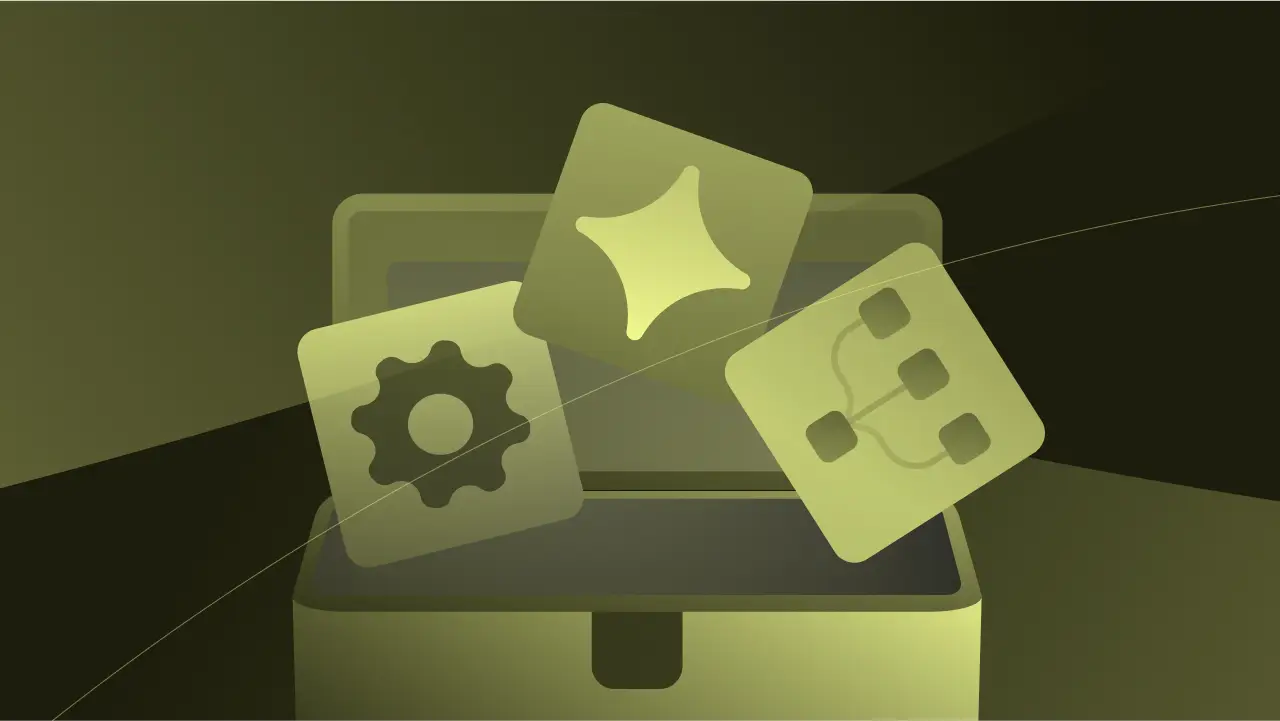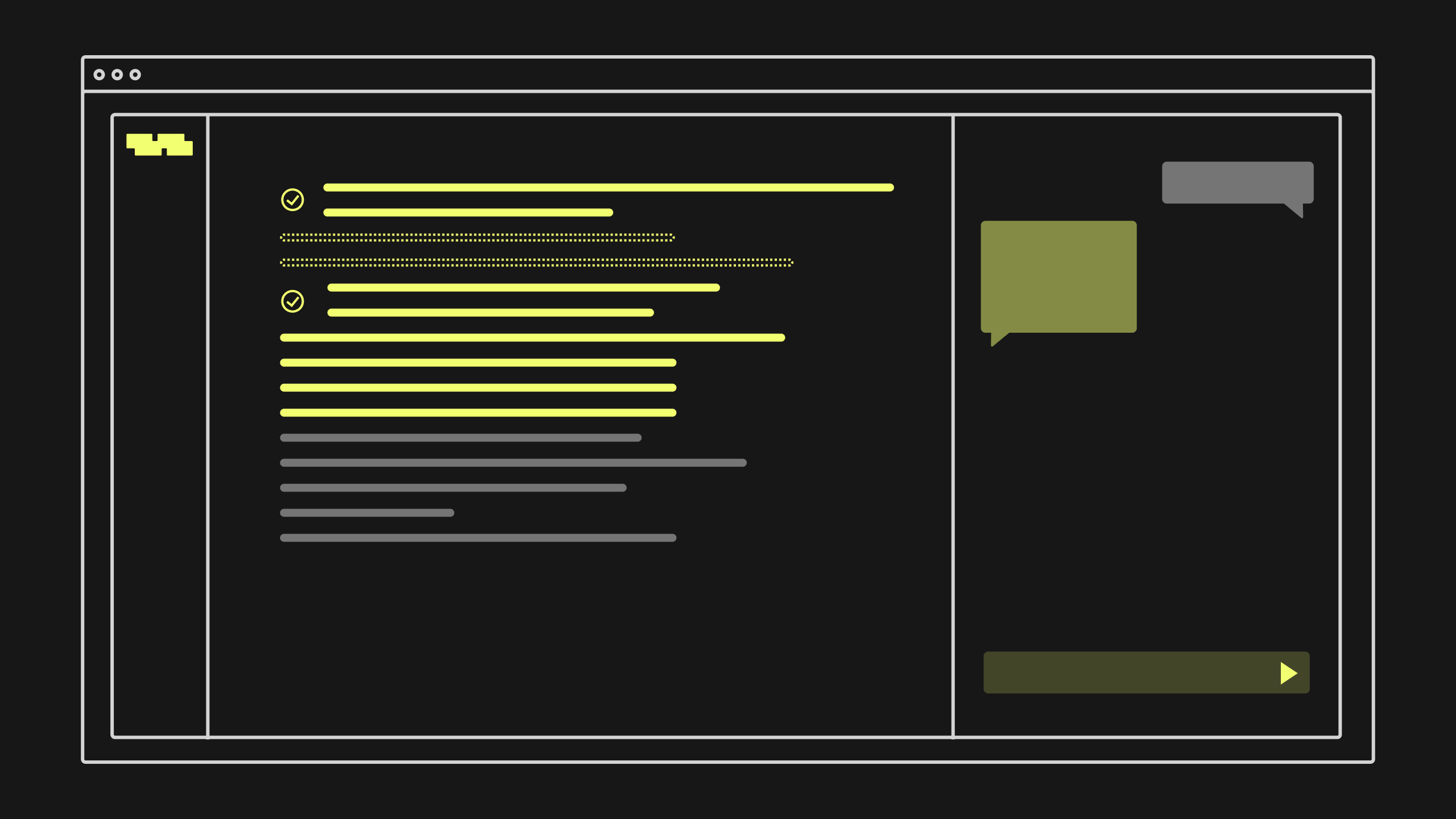
Key Takeaways
An RPA (Robotic Process Automation) tool is software that uses “bots” to automate simple, repetitive digital tasks by mimicking how humans interact with an application’s interface.
- What it does: Bots follow scripts to perform rule-based tasks like copying and pasting data between systems (e.g., Excel to an ERP).
- The business impact: RPA can reduce manual effort, cut costs, and improve data accuracy for highly repetitive, stable processes.
- The key limitation: It is brittle and difficult to scale. Because RPA relies on the user interface, bots often break when applications are updated, and they cannot handle exceptions or unstructured data.
Organizations today are constantly seeking innovative technologies to boost efficiency and free up their most valuable asset: their workforce. Process automation has emerged as a cornerstone of this effort, and for many years, Robotic Process Automation (RPA) has been a leading solution. An RPA tool offers a pathway to automate repetitive, rule-based tasks, promising accelerated operations, reduced errors, and significant cost savings.
But what exactly constitutes an RPA tool, and how does it integrate within a business’s operational framework? Furthermore, as technology continues its rapid evolution, how do traditional RPA tools measure up against newer, more intelligent automation platforms? This article will explore the world of Robotic Process Automation tools, their nature, operational mechanics, and the tangible benefits they can deliver.
It will also provide an objective analysis of the inherent limitations of a typical RPA tool and examine the ongoing shift in the process automation landscape towards more sophisticated, AI-driven approaches like Agentic Process Automation (APA). These advanced solutions offer enhanced intelligence, greater flexibility, and improved transparency. A thorough understanding of the capabilities and evolution of an RPA tool is paramount for making well-informed decisions regarding your organization’s automation strategy.
What is an RPA Tool?
At its core, an RPA tool is a software application specifically designed to automate digital tasks characterized by their repetitive nature, structured format, and adherence to predefined rules. The term “robotic” in Robotic Process Automation refers to software “bots” configured to mimic human actions when interacting with digital systems. Envision it as a digital assistant, programmable to execute on-screen actions like clicking, data entry, copying, pasting, and managing emails, with greater speed and consistency than a human.
These software bots operate at the user interface (UI) level, interacting with applications through the same graphical interface a human user employs. This capability is particularly valuable for integrating with legacy systems where direct API access is limited. Fundamentally, RPA is engineered to efficiently handle high-volume, predictable tasks within established business processes.
How Does RPA Work? Understanding the Mechanics of an RPA Tool
The operational effectiveness of an RPA tool relies on its ability to be configured to execute specific tasks. This process involves several key stages. First is Process Discovery & Definition, identifying and documenting manual, repetitive, rule-based tasks with structured digital inputs.
Next is bot development & configuration, utilizing the RPA tool’s interface (often visual) to map task steps, potentially by recording actions or using drag-and-drop components. The configured software bot is then strategically deployed onto a designated machine for autonomous execution, known as Bot Deployment. Finally, Execution & Management allows for manual initiation, scheduled runs, or event-triggered execution, often with a central dashboard for control and monitoring.
Essentially, an RPA tool follows a predefined script to navigate applications, input and extract data, and perform calculations based on rules. Its performance depends on the stability of application UIs and the consistency of data formats. This reliance on surface-level interaction is a defining characteristic of many RPA tools.
What can RPA Tools do for your Business?
When strategically applied to the right business processes, an RPA tool can unlock several tangible benefits for organizations, particularly within functions like accounting and finance. These benefits include enhanced efficiency and productivity through faster and continuous operations for high-volume processes. It also helps in cost reduction by automating manual labor, allowing reallocation of human resources to higher-value activities.
Another key benefit is improved accuracy and consistency in rule-based tasks, minimizing human errors. RPA also offers strengthened compliance and governance by ensuring process adherence and generating audit trails. Furthermore, it leads to accelerated processing cycles for critical tasks like invoice processing and report generation. Finally, RPA enables optimized resource utilization by freeing employees from mundane tasks to focus on critical thinking and customer interaction. These compelling benefits make RPA an attractive initial automation solution for many organizations.
Key Features and Considerations When Evaluating an RPA Tool
When evaluating or seeking to understand an RPA tool, several critical aspects warrant careful consideration:
- Types of RPA: Attended, Unattended, Hybrid.
- Coding Expertise: Varies from low-code/no-code to requiring scripting.
- Cost: Dependent on licensing, infrastructure, implementation, and maintenance.
Reputable RPA tools incorporate robust security features, but proper implementation and governance are crucial for handling sensitive data securely.
What RPA Can and Cannot Do
It is crucial to maintain realistic expectations regarding the capabilities of an RPA tool. RPA tools generally excel at efficiently automating high-volume, repetitive tasks that adhere to clearly defined rules. They are also proficient at interacting seamlessly with applications through their user interface (including screen scraping and accurate data entry).
Furthermore, RPA tools facilitate the movement of data between disparate systems, particularly legacy systems lacking direct APIs. They are also capable of performing meticulous data validation against predefined rules and criteria. Finally, they can generate comprehensive reports based on structured data inputs.
However, there are limitations to Robotic Process Automation. Traditional RPA struggles significantly with handling unstructured or highly variable data. Given their reliance on specific UI elements, even minor changes to application interfaces can easily disrupt bots’ functionality, necessitating frequent and costly maintenance.
RPA lacks inherent intelligence to make complex decisions or exercise nuanced judgment, strictly following predefined rules. Unlike AI-powered systems, standard RPA tools do not learn or adapt autonomously, requiring explicit reprogramming for modifications. Moreover, an RPA tool processes data without truly comprehending its underlying meaning or the broader business context, limiting its ability to handle nuanced situations effectively.
These inherent limitations highlight that while an RPA tool can be a valuable asset for automating simple, rule-based tasks, it often falls short when confronted with the dynamic and complex realities of many intricate enterprise workflows.
Industry Applications and Suitability for Business Size
Industries characterized by numerous repetitive, data-intensive back-office processes have witnessed significant adoption of RPA. These include finance and accounting, healthcare, and insurance. Within finance and accounting, RPA streamlines invoice processing, manages accounts payable & receivable, automates financial close procedures, and generates regulatory reports. In healthcare, it automates patient registration, manages claims processing, handles billing, and manages electronic health records. For insurance, RPA optimizes claims processing, manages policy administration, and supports underwriting.
Further applications are seen in manufacturing and human resources. In manufacturing, RPA automates bills of materials, manages inventory, and streamlines order processing. For human resources, it automates employee onboarding, manages payroll, and handles benefits administration.
While initially adopted primarily by large enterprises, RPA is becoming increasingly accessible to SMBs, particularly with cloud-based tools and competitive pricing. However, SMBs must carefully evaluate ROI, process complexity, and the availability of internal skills to manage the RPA tool effectively, considering potential maintenance costs and automation fragility.
The Evolution Beyond Traditional RPA: The Shift to Intelligent Automation
The very limitations inherent in a traditional RPA tool have paved the way for more advanced automation solutions. As businesses increasingly demand greater flexibility, enhanced intelligence, and the capability to automate more complex, end-to-end processes, the focus is shifting from simple task automation to intelligent automation. This new generation of process automation RPA strategically leverages Artificial Intelligence (AI), Machine Learning (ML), and Natural Language Processing (NLP) to overcome the shortcomings of older Robotic Process Automation tools.
Intelligent Automation and Agentic Process Automation (APA) offer the capability to efficiently process and accurately understand unstructured and semi-structured data. They can also make data-driven decisions and handle exceptions with greater sophistication. Furthermore, these advanced solutions can continuously learn from new data and dynamically adapt to evolving processes. Finally, they can comprehend context to interact more naturally with users and systems. This evolution signifies a move towards automation solutions that actively understand and reason about tasks, leading to more resilient, scalable, and transformative initiatives.
Kognitos and Agentic Process Automation: A Paradigm Shift Beyond Traditional RPA Tools
As organizations seek automation solutions that transcend the limitations of conventional RPA, Kognitos emerges with its innovative Agentic Process Automation (APA) platform, representing a fundamental departure from traditional RPA. Unlike RPA tools relying on UI recording or complex scripts, Kognitos empowers business users to define automations in plain English, with its AI intelligently interpreting this intent to orchestrate intricate workflows, dramatically reducing complexity. Kognitos’ AI goes beyond rigid rules to understand context, handle variations, and make reasoned decisions on exceptions.
Because processes are defined in natural language, they offer unparalleled transparency and auditability, simplifying governance. Kognitos’ focus on process intent over UI elements makes its automations more resilient to system changes, reducing maintenance. Designed for complex, multi-step enterprise processes across numerous systems, Kognitos extends beyond the scope of a single RPA tool. It offers a transformative approach for accounting and finance leaders and CIOs to automate sophisticated back-office operations with unmatched intelligence, ease of use, and transparency.
Choosing the Right Path for Your Automation Journey
An RPA tool has played a significant role in introducing businesses to automation benefits for simple tasks. However, the increasing complexity and need for agility in modern enterprises highlight its limitations. The future of process automation lies in intelligent, AI-driven solutions like Agentic Process Automation.
These advanced platforms offer the ability to handle complex workflows, understand unstructured data, adapt dynamically, and provide transparency and ease of use. When formulating your automation strategy, look beyond legacy RPA functionalities to innovative solutions that deliver deeper, more resilient, and intelligent automation tailored to your specific needs, prioritizing reduced complexity and enhanced transparency.
Discover the Power of Kognitos
Our clients achieved:
- 97%reduction in manual labor cost
- 10xfaster speed to value
- 99%reduction in human error
An RPA tool (Robotic Process Automation tool) is a software application that empowers businesses to configure “bots” to emulate human actions and automate repetitive, rule-based digital tasks across various applications, primarily by interacting with their user interfaces.
RPA functions by deploying software bots meticulously programmed to follow a specific sequence of steps to complete a task. This can include actions such as logging into applications, copying and pasting data, accurately filling in forms, and efficiently processing transactions. These bots typically interact with systems at the user interface (UI) level.
The cost of an RPA tool can vary significantly based on factors such as the vendor, the number of bots required, the specific features included, the deployment model (cloud-based vs. on-premise), and the overall complexity of the implementation. Costs can range from a few thousand dollars annually for basic setups to hundreds of thousands of dollars for comprehensive enterprise-wide deployments, encompassing licensing, development, and ongoing maintenance.
The three primary types of RPA are: 1. Attended RPA (bots that assist human employees in real-time). 2. Unattended RPA (bots that operate autonomously on scheduled tasks, typically for back-office processes). 3. Hybrid RPA (a sophisticated combination of both attended and unattended approaches).
While many modern RPA tools offer intuitive low-code/no-code interfaces suitable for basic automation tasks, more complex scenarios, intricate customizations, and the implementation of robust error handling often necessitate some level of scripting or coding knowledge.
RPA excels at automating repetitive, rule-based tasks that involve structured data, such as accurate data entry and efficient report generation. However, it generally cannot effectively handle unstructured data (like free-form text or scanned documents with varying layouts), tasks that require complex decision-making or nuanced human judgment, processes that undergo frequent changes, or understand the underlying context of the data it processes in the same way that AI-powered systems can.
Identifying the “best” RPA tool is highly dependent on the specific needs and complexities of a business. Historically, leading vendors in the Robotic Process Automation tools market have included UiPath, Automation Anywhere, and Blue Prism, with Microsoft Power Automate also emerging as a significant player. However, the landscape is continuously evolving with the rise of more AI-centric automation platforms. When evaluating options, businesses should carefully consider factors such as ease of use, scalability, integration capabilities, security features, and the level of support provided by the vendor.
The primary benefits of an RPA tool for business include significant increases in efficiency and productivity, substantial cost reduction through the automation of manual labor, improved accuracy and consistency in task execution, enhanced compliance with regulations through consistent process adherence, and faster processing cycles for various business operations.
Industries characterized by high-volume, repetitive, and rule-based processes tend to derive the greatest benefits from RPA implementation. These commonly include finance and accounting, healthcare, insurance, manufacturing, and human resources.
Yes, RPA can be a valuable asset for small and medium-sized businesses (SMBs), particularly with the increasing availability of cloud-based and more affordably priced RPA tools. However, SMBs should carefully assess their specific automation needs, the potential return on investment, the complexity of the processes they aim to automate, and the internal resources required for implementation and ongoing maintenance.
Reputable RPA tools incorporate robust security features, such as secure credential vaults and role-based access control. However, ensuring the overall security of RPA implementations necessitates the adoption of strong implementation practices, the establishment of comprehensive governance policies, and diligent ongoing monitoring, especially when bots are handling sensitive data. The inherent transparency of the RPA tool’s operations is also a critical factor in maintaining security and facilitating audits.
Key limitations of Robotic Process Automation (RPA) include its challenges in effectively handling unstructured or highly variable data, its potential fragility when encountering frequent user interface changes in applications, its inability to make complex decisions or exercise human-like judgment, its lack of autonomous learning and adaptation capabilities, and its limited understanding of the broader context of the data it processes.
Kognitos offers a fundamentally different approach to automation compared to traditional RPA tools. It leverages Agentic Process Automation (APA) driven by natural language understanding. Instead of relying on brittle UI scripts, users describe their processes in plain English. Kognitos’ AI intelligently interprets the intent behind these descriptions, effectively handles complexity and exceptions, and provides greater resilience to system changes and unparalleled transparency. This significantly reduces the complexity associated with building, maintaining, and auditing automations compared to older Robotic Process Automation tools.








